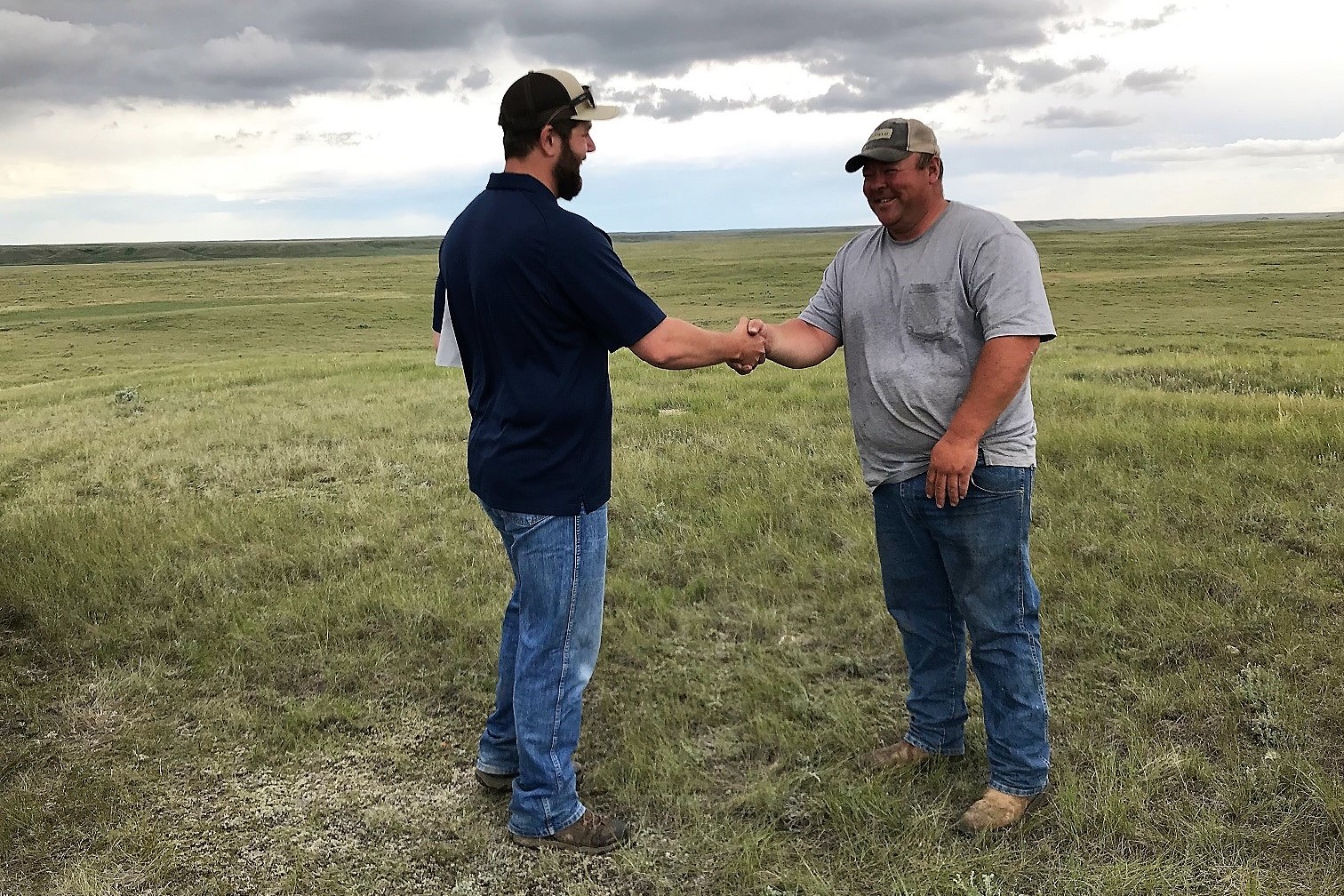Providing livestock with consistent water is often one of the biggest challenges faced by ranchers in the West. Opportunities to do so are thin on the ground and become even thinner throughout the summer, especially in a drought year like the one experienced in north-central Montana in 2021. Tyrel Obrecht, who operates the Louie Petrie Ranch out of Turner, Montana alongside his father, has long felt the need to provide his cows with water that wouldn’t fade away as the grazing season wore on.
Seeking a longer-term solution that could carry his livestock through dry years, Obrecht turned to the Rancher’s Stewardship Alliance (RSA). The RSA is a rancher-led nonprofit in north-central Montana that works to steward the rich habitat of the northern prairies in the name of strengthening the rural community and economy. In doing so, they collaborate with conservation organizations and state and federal agencies to identify ways that conservation and ranching can work together.
Martin Townsend, the RSA’s Conservation Coordinator and a Coordinating Biologist for Pheasants Forever, likened the RSA to a hub for those invested in the land’s long-term health. That includes ranchers like Obrecht. Thanks to his involvement with the RSA, Obrecht was able to make headway on providing reliable water to his herd. One of the management projects the RSA works on is integrated stockwater systems, which involves drilling new wells and installing pipelines and tanks to provide water in otherwise dry areas. This was just what the Louie Petrie Ranch needed.
But the real power of the group is its landowner leadership, according to Marisa Sather, a U.S. Fish and Wildlife Service Partners Program biologist who works with the RSA. “The landowners don’t just have a seat at the table, they are the table,” she said. “That makes it a real gateway to the entire community and brings a level of transparency and openness to what we’re doing.”
As a result of that trust, Sather said, people have shown an immense willingness to collaborate to get work done and learn from each other. This was no different for the stockwater project on Obrecht’s family ranch. According to data from Montana Fish, Wildlife, and Parks (FWP), the Louie Petrie Ranch is home to a key migration linkage for pronghorn antelope. FWP, along with other groups, is working to preserve such connection points in big game migration corridors through projects like installing wildlife-friendly fencing on private ranches. Layering one of these projects on top of the stockwater project made it a win-win solution for everyone involved.
Part of the RSA’s success, according to Townsend, is the focus on building long-term relationships between ranchers and conservation entities. This focus and the community transparency means that landowners are involved in every step of the process, even years after the project is completed. Sather said what usually drives an RSA project is not necessarily quick gains for conservation but rather the opportunity to build these relationships.
This sense of long-term sustainability is at the heart of what the RSA provides to the community. Obrecht said the group’s investment into both people and place is what ranching communities like his need the most to thrive. “If you want intact landscapes and intact grasslands, you need working families that are intact,” he said. “We want young people to realize that they can come to this part of Montana and be a part of a thriving, progressive community that values the land, too.”
This article was adapted from its original format courtesy of the Intermountain West Joint Venture. The full article is available on the IWJV website.

